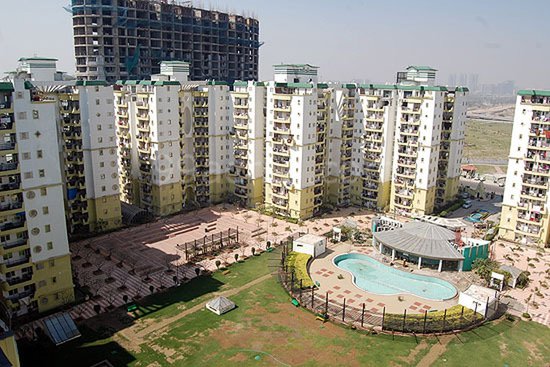On August 28th, 2022, two tall towers were brought down using the waterfall implosion method.
What is the waterfall implosion method?
In this method, the support structure of the building is taken away. This causes the rest of the structure to implode (when the debris falls inwards, that is called an implosion. When it falls outwards, that is called an explosion).
This method shifts the center of gravity of the building, causing it to become unstable. The building falls inwards as a result of this instability.
In this way, people around the building do not get injured as a result of concrete, bricks and other debris falling.
This method was first used in India at Kochi in 2020.
But why were the twin towers demolished at all?
That, now, is a very long story.
The story begins in 2004.
Supertech Constructions Limited was given a plot of land in Noida. They submitted a plan to construct 14 buildings with 10 towers each. The complex was also supposed to have a shopping complex and a park.
The height of each tower could not exceed 37 meters / 121 feet.
The complex was called Emerald Court.
In June 2006, the company got additional land and two more towers were added to the plan. The number of floors was increased to 11.
In November 2009: Two more towers – Apex and Ceyane, were added to the plan. Each of these towers was to be 24 floors high. This number was later raised to 40 floors. This was not in the original building plan and reduced the area available to the existing flat owners.
In 2011, the Emerald Court Resident Welfare Association took Supertech to court. They said that these high rises were not in the plan.
In 2012, the NOIDA authority approved the plan, before the Allahabad High Court could deliver a judgement.
In 2014, the Allahabad High Court ruled in favour of the RWA. Supertech was instructed to demolish the towers constructed so far at their own cost. They were also instructed to return the amount to the homeowners with 14% interest.
In response to this judgement, in 2014 itself, the NOIDA authority and Supertech filed an appeal in the Supreme Court.
On August 31, 2021, the Supreme Court upheld the judgement of the Allahabad High Court. Supertech was asked to refund the amount collected so far to the property buyers with 12% interest. 56 of these homebuyers are apparently still waiting for their refund.
The demolition was to be held in May 2022 but was postponed to August.

The Supreme Court also ruled that:
A. Supertech would bear the cost of the demolition.
B. RWA of Emerald Court will get 2 crore rupees
What happens now?
As you can see in this video, a lot of dust was generated during the implosion. 3700 kgs of explosives were used, so fumes from that will also enter the atmosphere.
All the residents of Emerald Court were evacuated before the implosion.
Now, the following things take top priority:
A. Removing the debris from the site
B. Taking precautions until the air quality improves
C. Ensuring that home owners get the refund promised by the Supreme Court.
What about the builder?
The builder has issued a statement saying that they have incurred a loss of 500 crores on account of this demolition.
This is a landmark judgement, not just for Supertech, but also for other builders. In India, builders tend to start construction without always getting the requisite approvals. Delayed delivery to property owners is another well known issue.
RERA and other regulations have tried to monitor both investment and operations in the construction industry.

